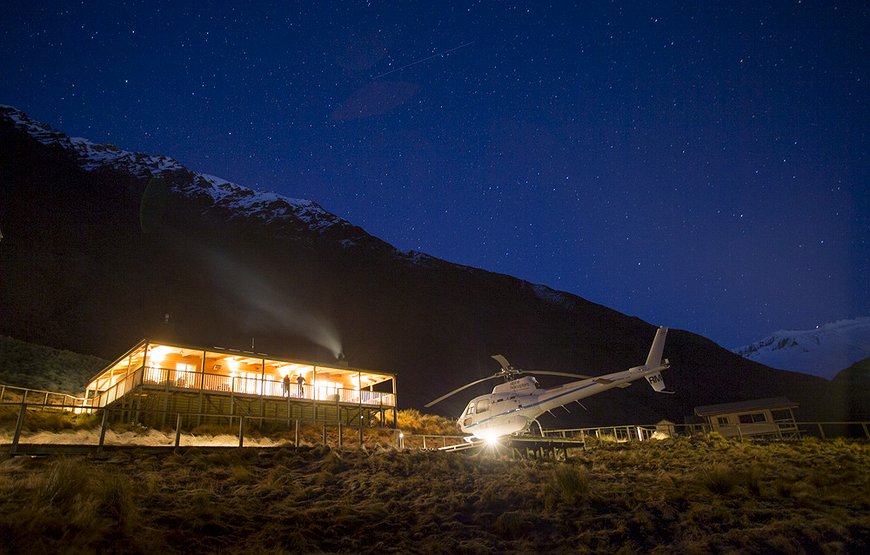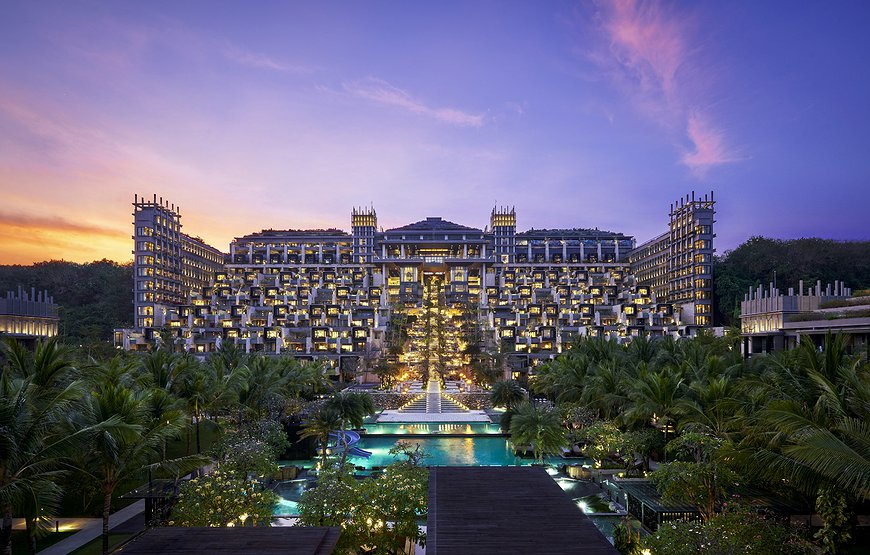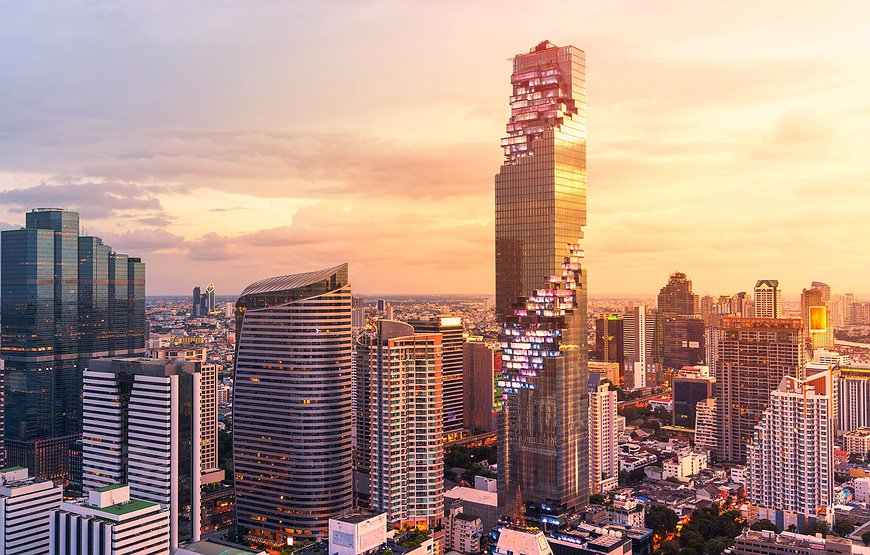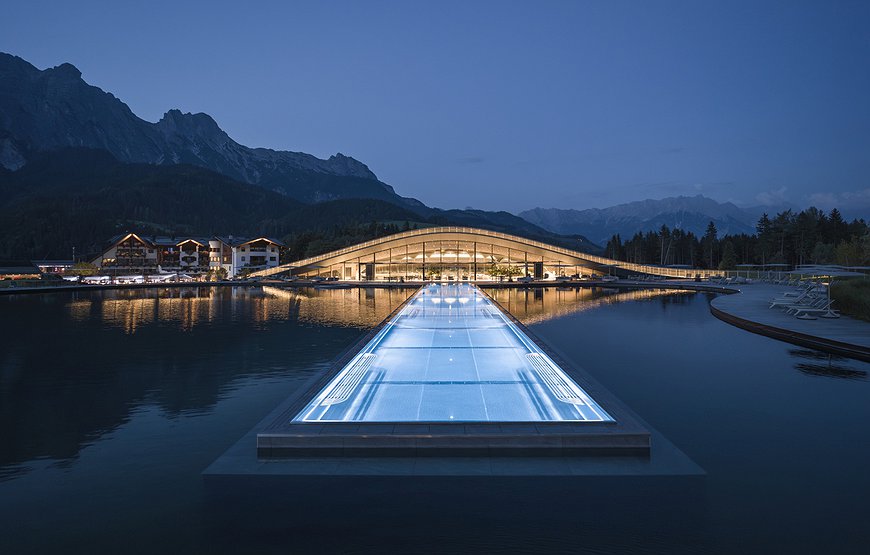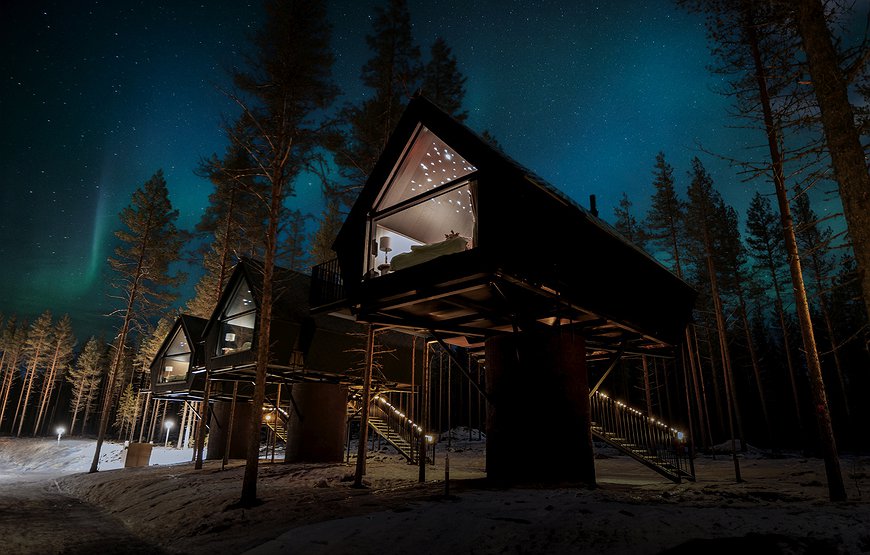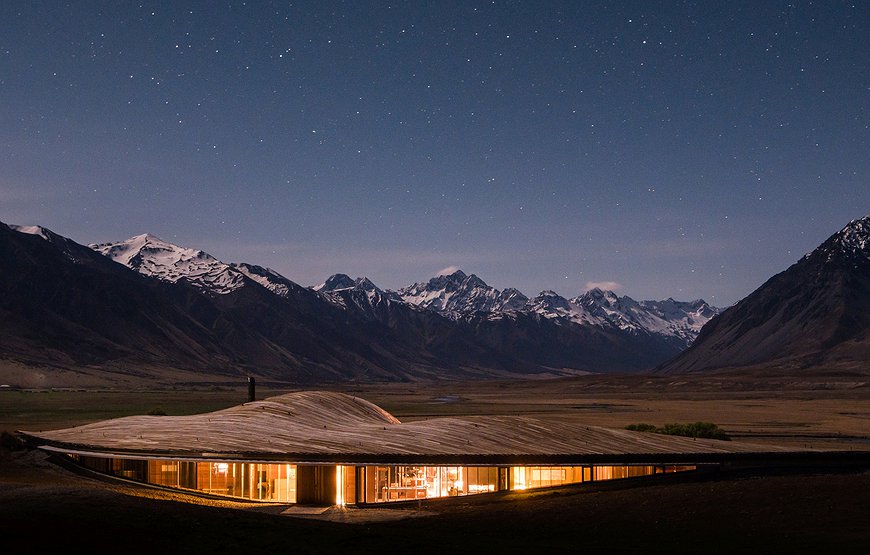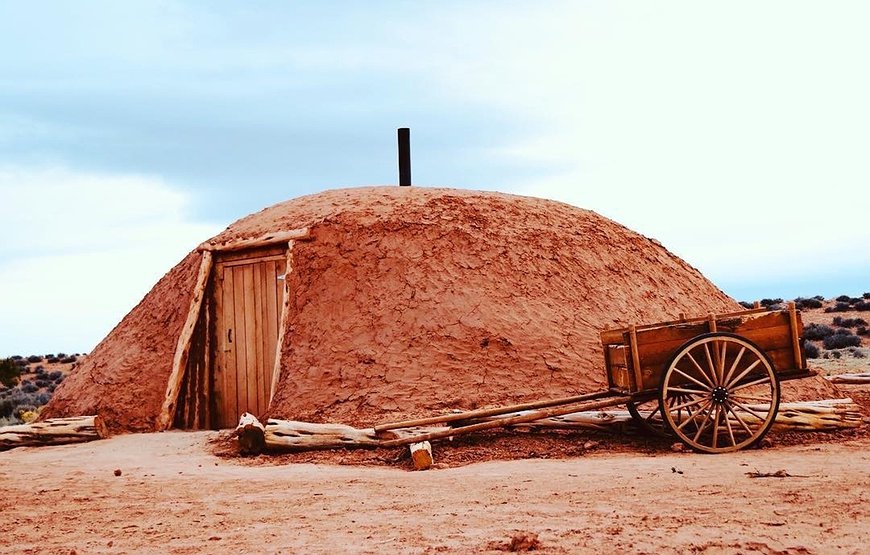
Hoshinoya Bali does the unexpected: it whispers. In a destination where resorts often scream for attention with infinity pools and beach clubs, this property takes a different approach. The jungle does most of the talking here – a constant rustle and hum that becomes the soundtrack to your stay. Set above the sacred Pakerisan River in Ubud, this is where Japanese restraint and Balinese spirituality have been woven together into something that feels both foreign and utterly at home.
Between Sacred Waters and Rice Fields
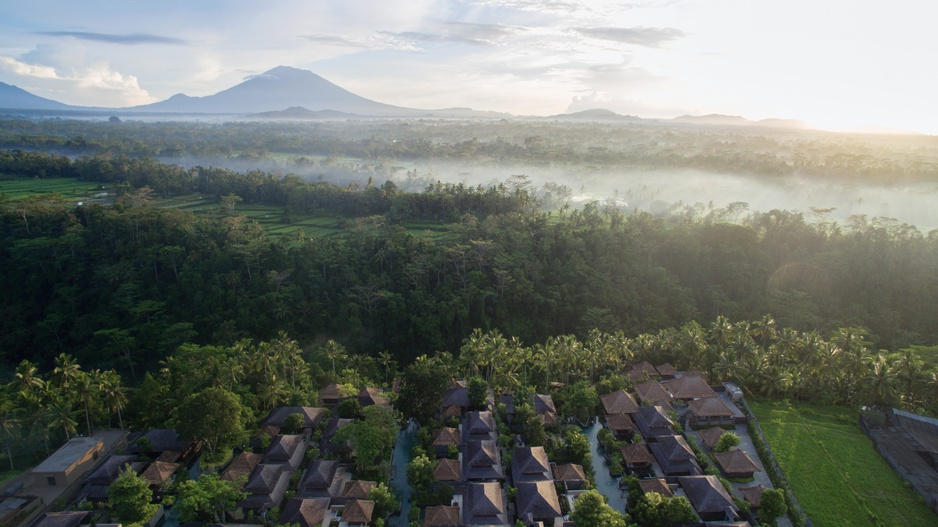
Photo by Hoshino Resorts
Hoshinoya Bali sits in the eastern reaches of Ubud, perched above a river valley that plunges 170 meters down into lush greenery. It's a 90-minute drive from the international airport, but you're only half an hour from Ubud's buzzing center of bars and boutiques. Somehow, it manages to feel worlds away. Five minutes by bicycle in the other direction, you'll find rice paddies stretching out in geometric patterns, linked by wooden bridges that connect tiny temples and hamlets.
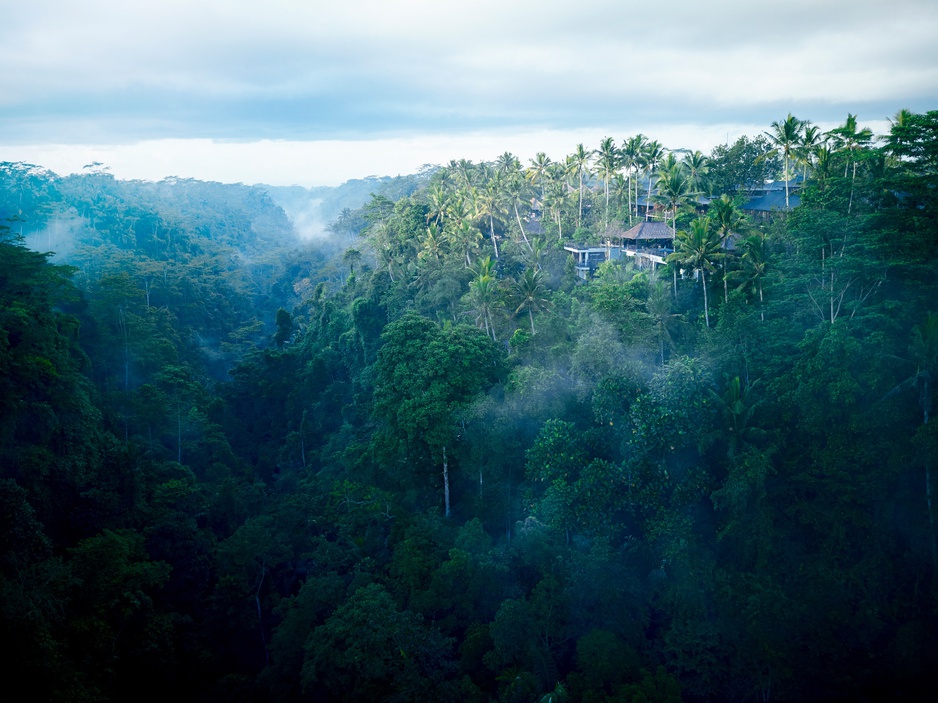
Photo by Hoshino Resorts
The sacred Pakerisan River flows below – the same river fed by the holy spring of Tirta Empul, where the god Indra is said to have thrust his sword into the earth and drawn water from the ground.
When Two Cultures Converge
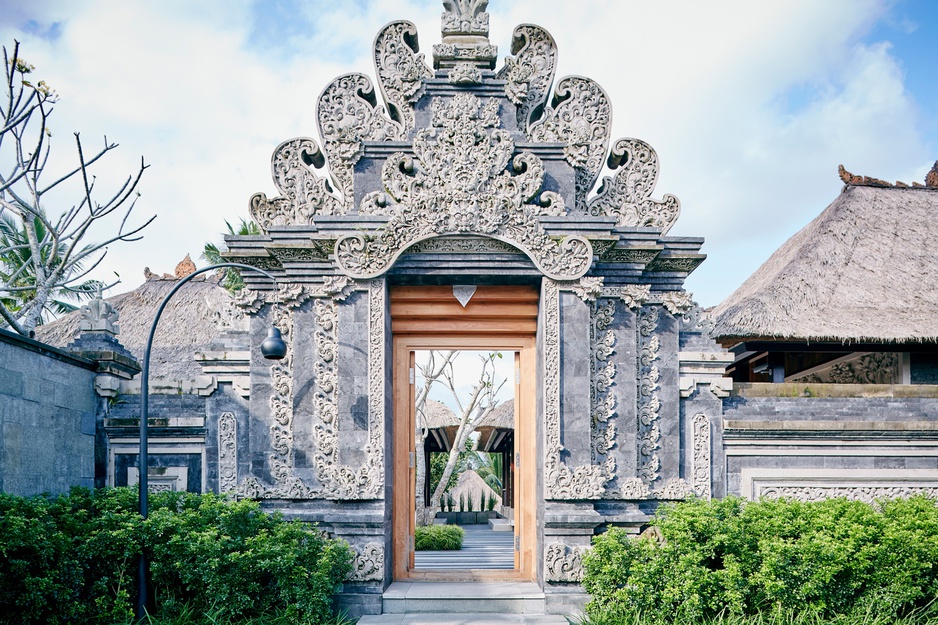
Photo by Hoshino Resorts
This was Hoshinoya's first venture outside Japan when it opened in 2017, and architect Rie Azuma had a tricky brief: create something unmistakably Japanese while honoring Balinese tradition. She spent months researching, visiting Hindu temples, traditional homes, and workshops throughout Indonesia where artisans worked with metal, stone, wood, and batik.

Photo by Hoshino Resorts
What emerged is a resort that doesn't try to hide its Japanese bones – there are shoji doors, andon lighting, and a careful use of space – but every element has been filtered through Balinese culture.
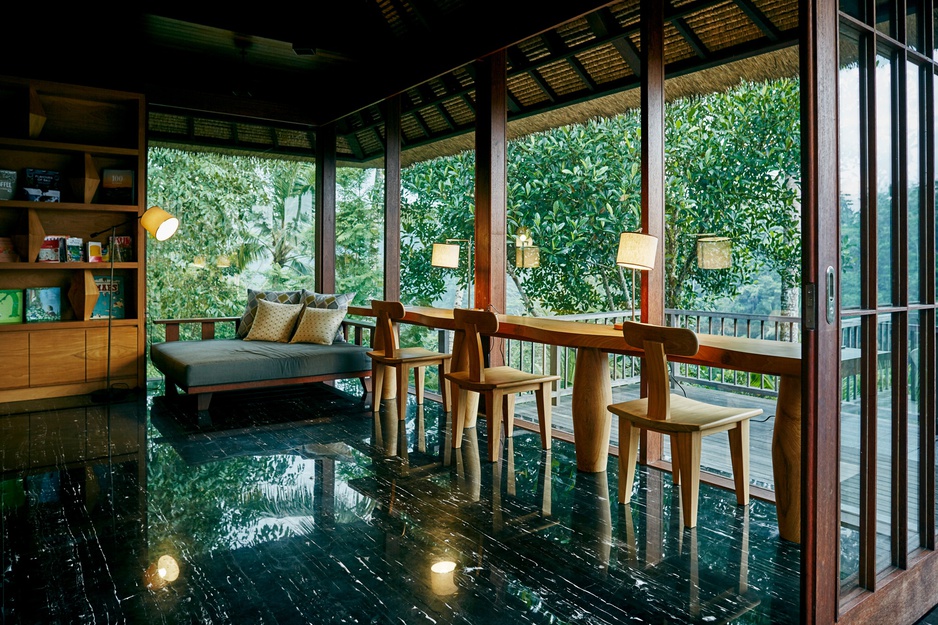
Photo by Hoshino Resorts
The landscape architect Hiroki Hasegawa shaped the grounds around three long canal-like pools, using water gardens to create the illusion of naturally occurring streams that echo the river valleys nearby. Public spaces cling to the valley's edge, including a boardwalk built along an ancient canal that's part of Bali's traditional subak irrigation system, now recognized by UNESCO. The lighting throughout was designed to preserve the night sky – sources wrapped in batik cloth or placed in containers crafted by local artisans cast warm, indirect light that creates deep shadows and highlights the intricate wall carvings.
Small Plates, Big Flavors
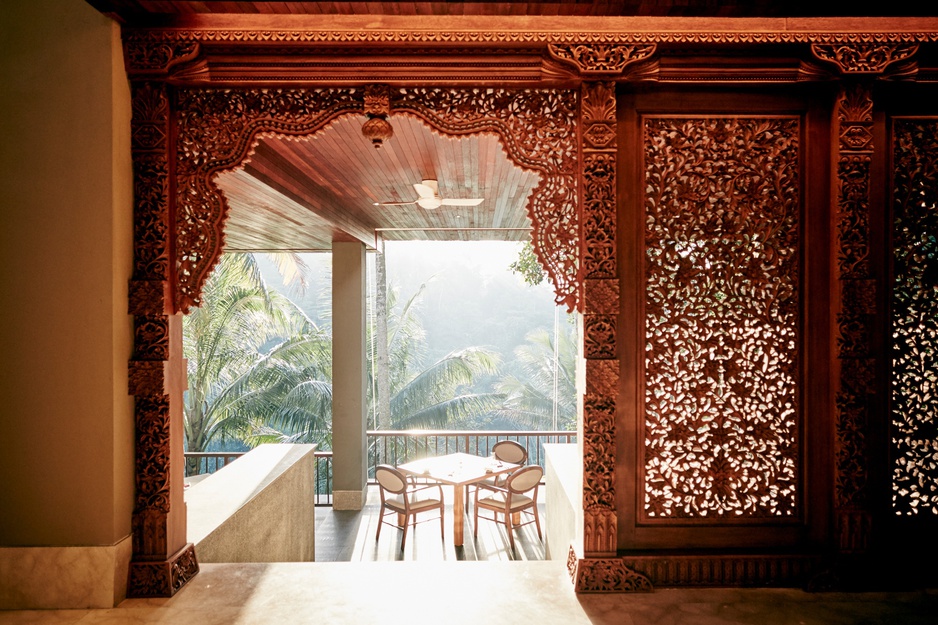
Photo by Hoshino Resorts
Food here comes as a parade of small, precise dishes rather than the large sharing plates typical of Indonesian dining. It's Balinese cuisine refracted through a Japanese lens – multi-course meals that let you taste the interplay of regional spices and ingredients without overwhelming your palate.

Photo by Hoshino Resorts
The open-air restaurant overlooks the jungle, with the mystical sounds of gamelan drifting through the space. Even the dishware tells a story: amuse-bouches arrive in die-cast dishes with batik motifs, while larger dishes come in baskets inspired by the offerings Balinese Hindus present to the gods daily. The eight-course Ubud Jungle Dinner, served at dusk in one of the air gazebos suspended above the valley, is the showpiece – candles flickering as the jungle settles into evening around you.
Three Villas, Three Ways to Wake Up
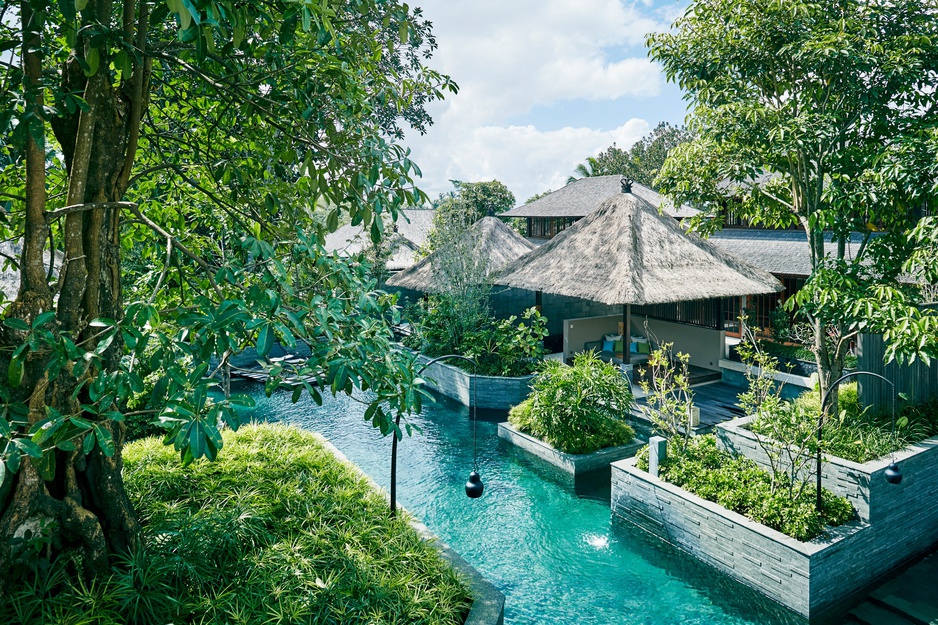
Photo by Hoshino Resorts
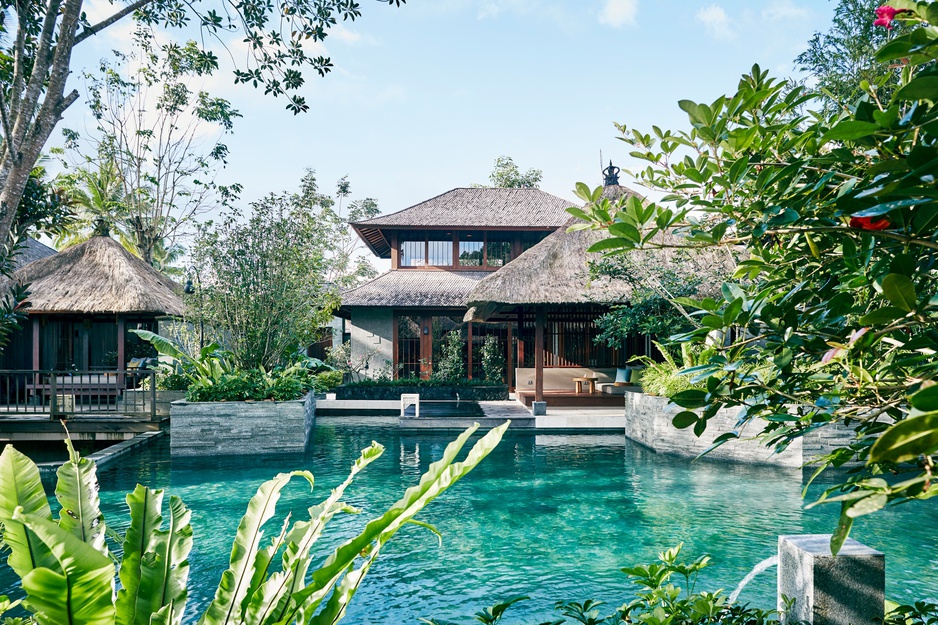
Photo by Hoshino Resorts
There are just 30 villas here, spread across three types. Villa Bulan is the standard option, a peaceful retreat with pool views and space for three. Villa Soka is a maisonette-style setup accommodating four, with an open living room that catches the light. Villa Jalak is the prize – a single-story villa with a wide terrace that wraps around to reveal views over that prehistoric-looking river valley.
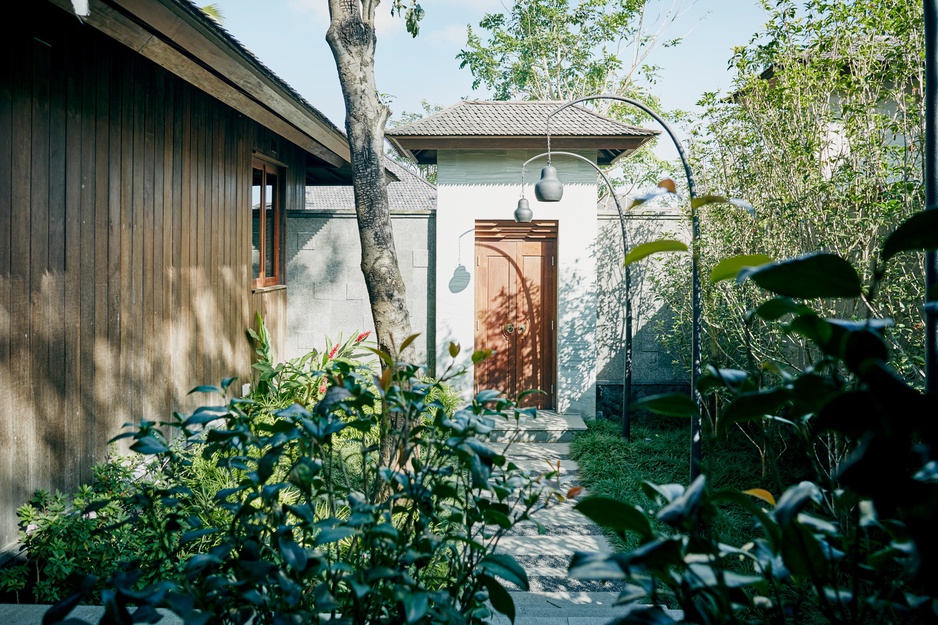
Photo by Hoshino Resorts
Inside, you'll find futon-style beds (raised slightly off the floor), dark woods, silently gliding doors, and bathrooms with Japanese soaking tubs and high-tech toilets.
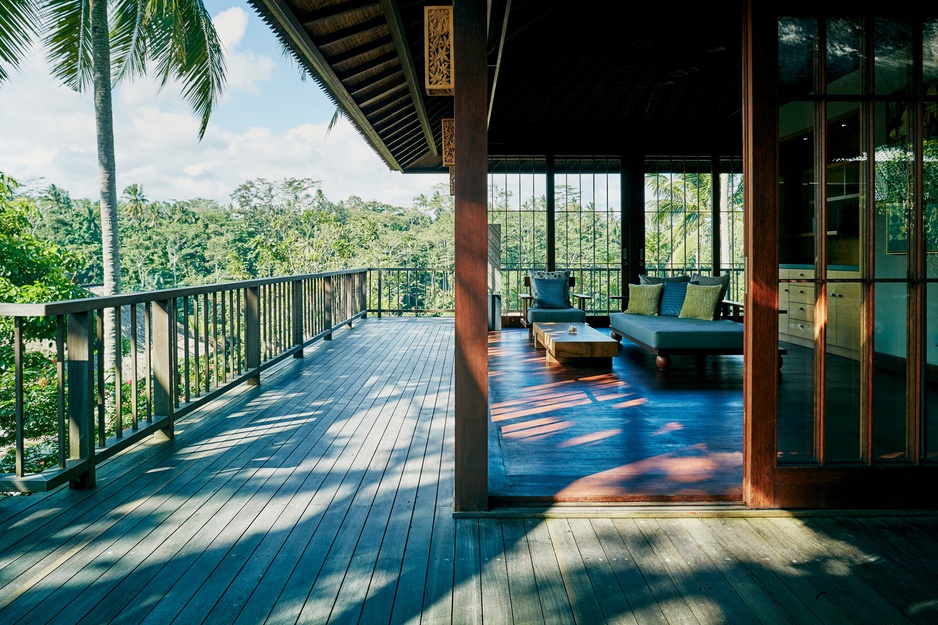
Photo by Hoshino Resorts
The walls throughout feature hand-carved wood engravings depicting Ubud's birds, flowers, and trees, while the poolside living areas have intricate stone carvings with plant and animal motifs.

Photo by Hoshino Resorts
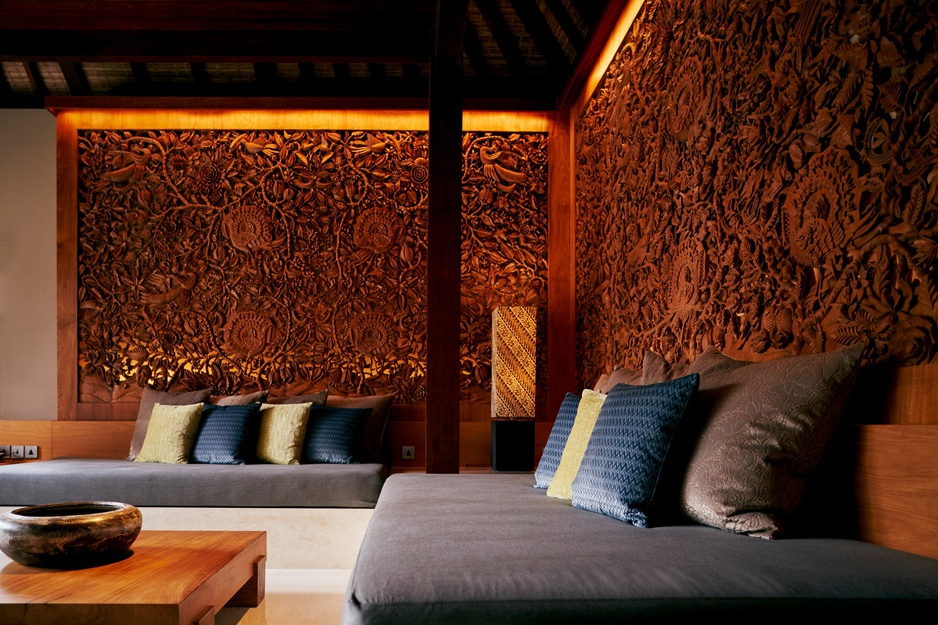
Photo by Hoshino Resorts
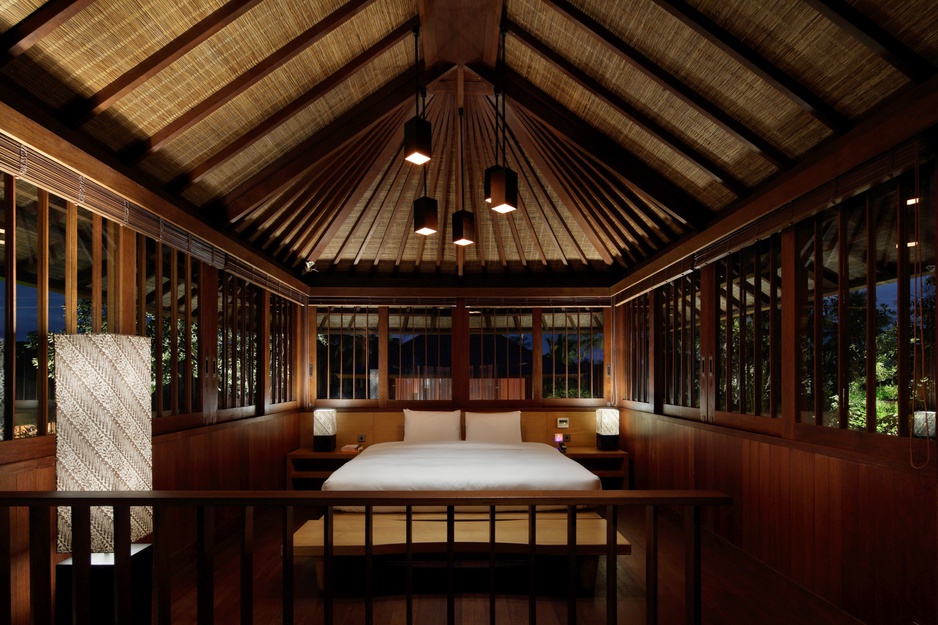
Photo by Hoshino Resorts
Canals That Flow Through Your Room

Photo by Hoshino Resorts
The three 70-meter pools wind between the villas like canals, and every room – even those on the upper floors – opens directly onto them.
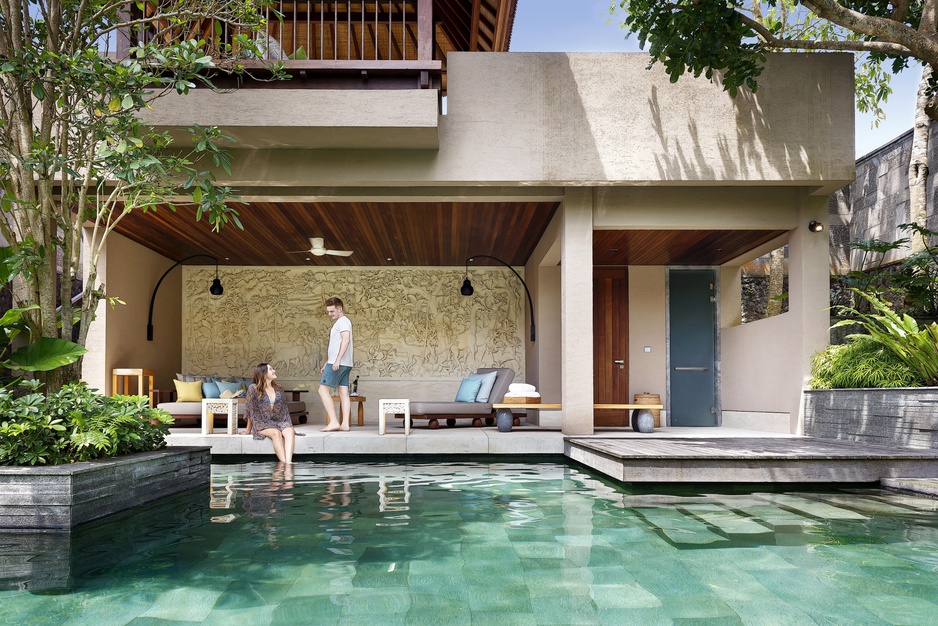
Photo by Hoshino Resorts
Water gardens divide each pool into private sections adjacent to your villa, plus a canal-like public area running through the center.

Photo by Hoshino Resorts
It's an unusual setup that gives you both seclusion and the option to swim laps or explore the property by water.

Photo by Hoshino Resorts
The pools are open 24 hours, and they're functional too: they feed into the subak irrigation channels that run down to neighboring rice paddies, connecting the resort to the landscape beyond.
Spa
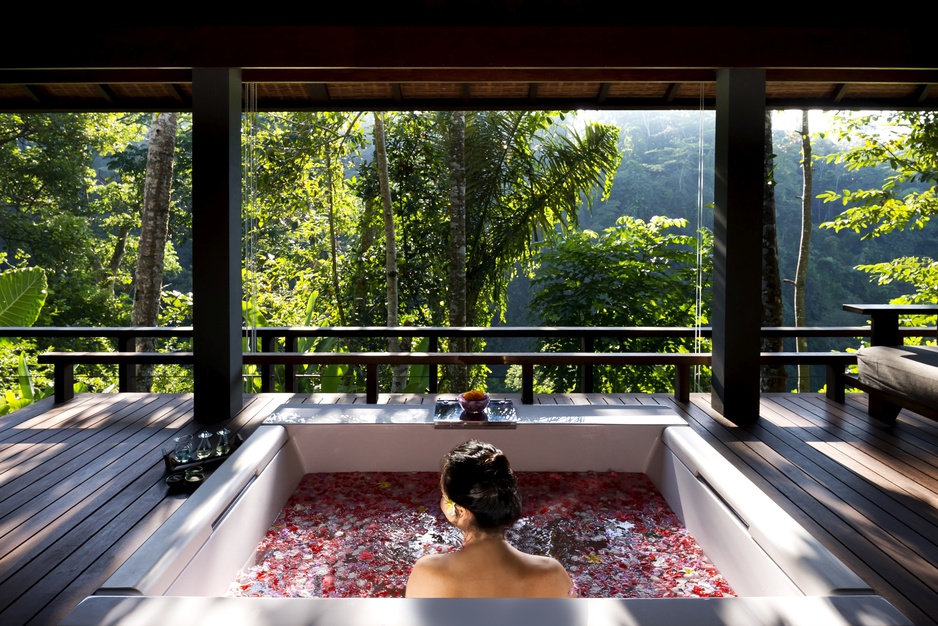
Photo by Hoshino Resorts
Reached by a small funicular that rattles you down the hillside, the spa sits halfway to the valley floor, surrounded by jungle. The descent alone shifts something in you – you become more attuned to the sounds of leaves and water, the chatter of your mind quieting down. The treatments focus on traditional Balinese massage, an ancient technique that originated in Javanese royal courts, using herbal medicines, rice flour, and organic oils. The spa rooms are positioned to let the sounds and energy of the Pakerisan River wash over you as you're worked over.
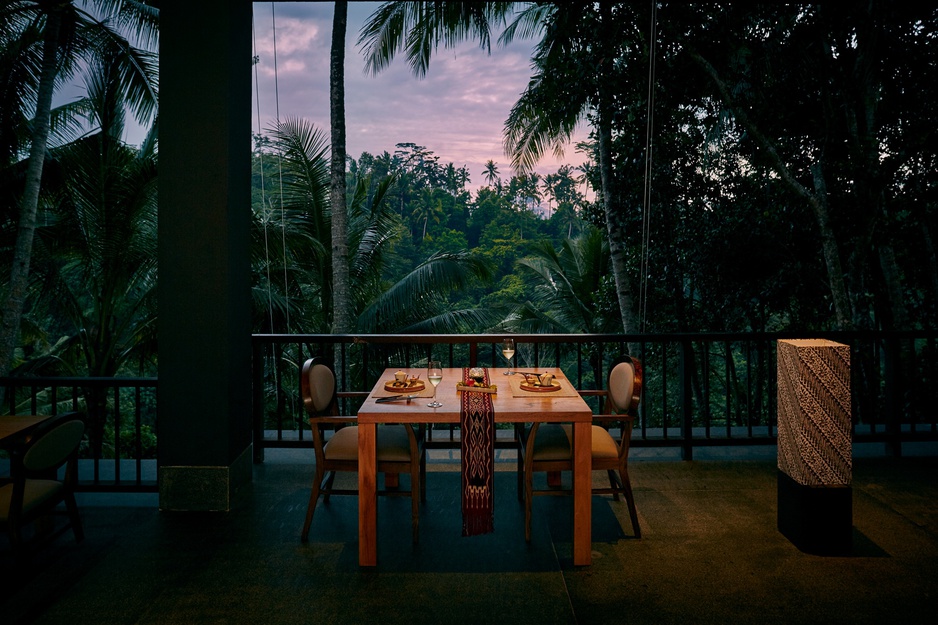
Photo by Hoshino Resorts
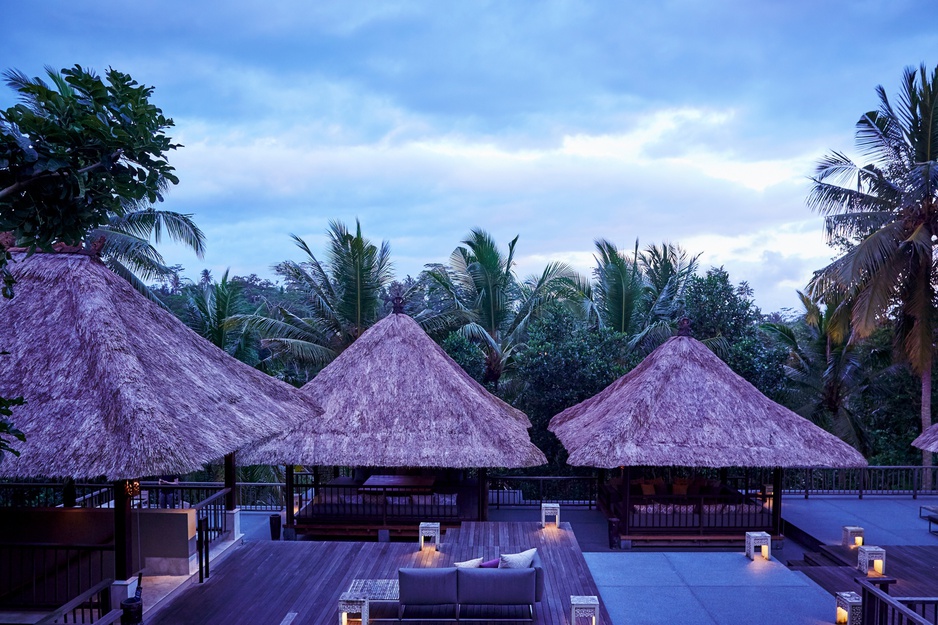
Photo by Hoshino Resorts
Birdcages in the Sky

Photo by Hoshino Resorts
The cafe gazebos hover above the boardwalk like elaborate birdcages, projecting out over the valley with views that stretch across the jungle canopy.
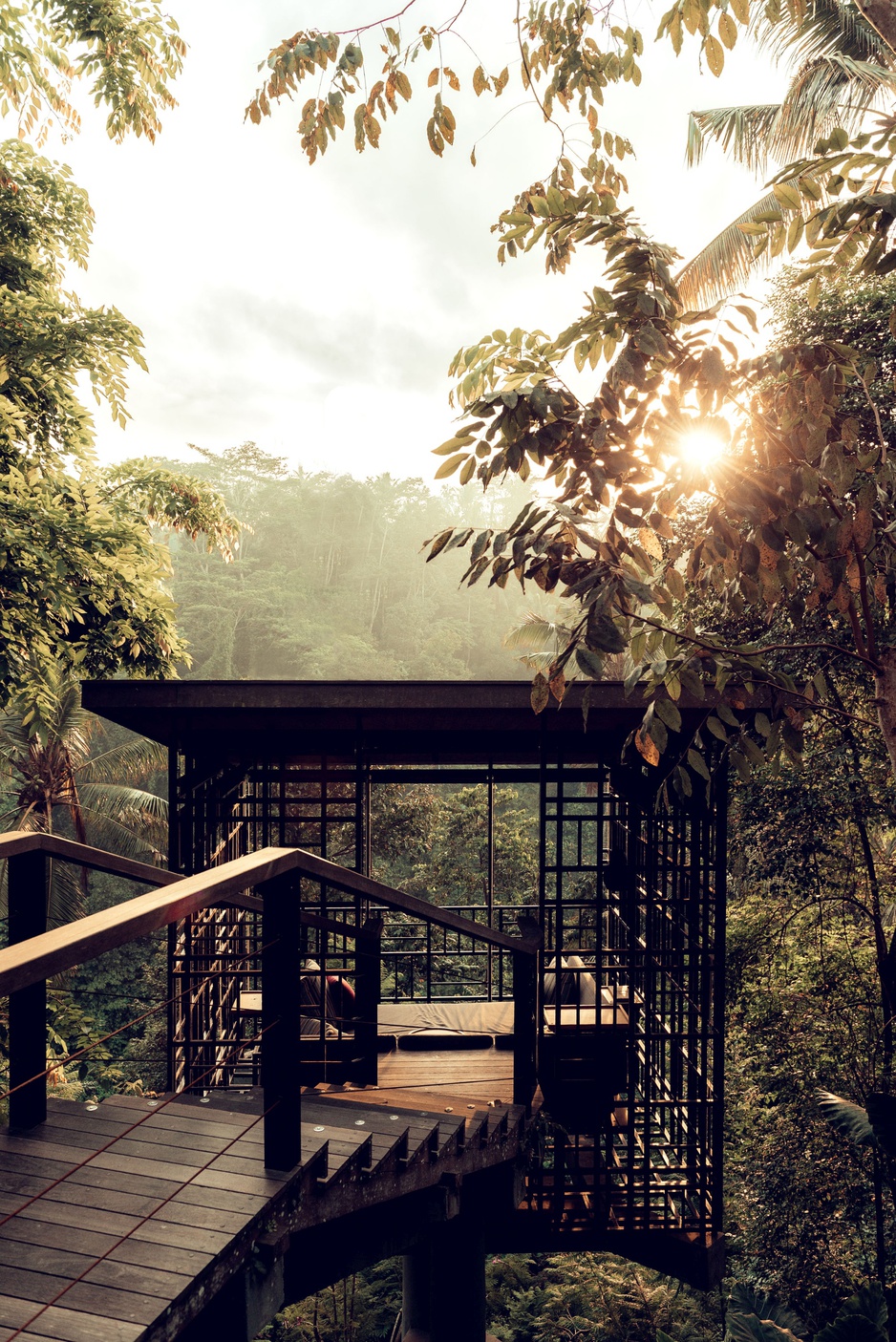
Photo by Hoshino Resorts
Sitting here feels like floating – the trees are close enough to touch, while the ground drops away 170 meters below.
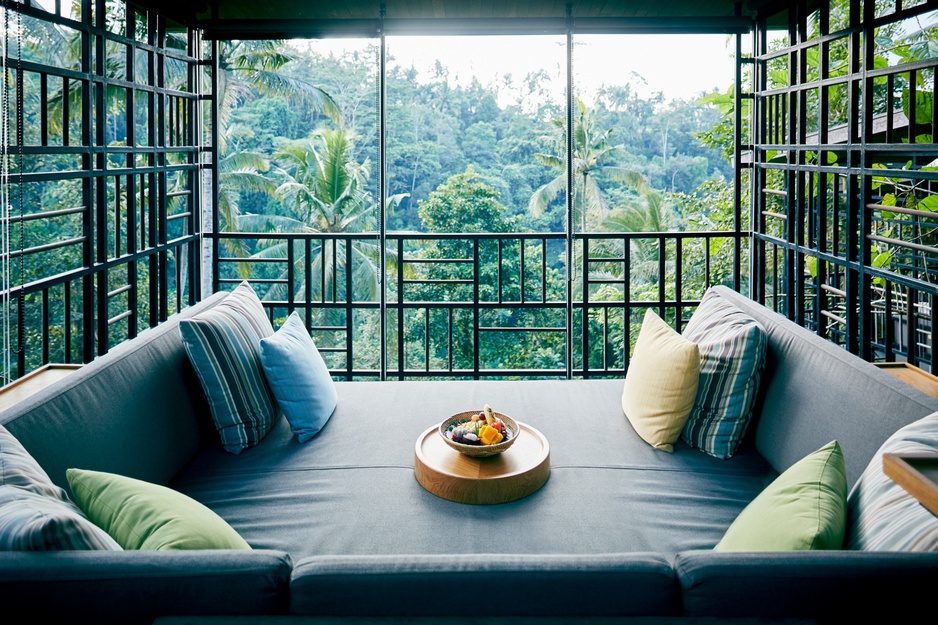
Photo by Hoshino Resorts
You can take breakfast here, afternoon tea service, or just sit with a drink as the jungle shifts through its daily transformations.
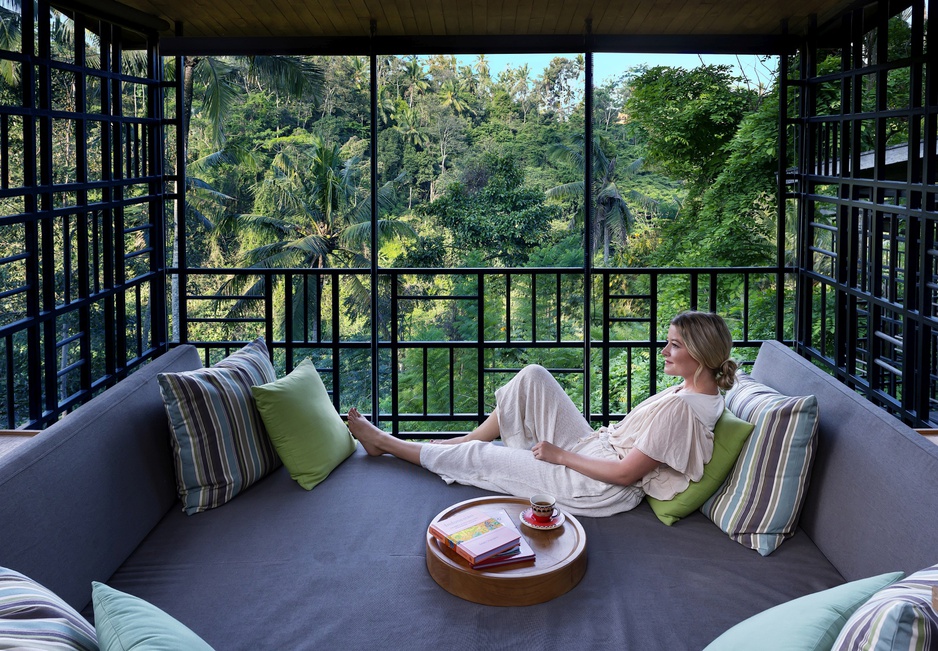
Photo by Hoshino Resorts
These same structures become the setting for special dinners, where you're suspended between earth and sky as dusk settles in.
Yoga
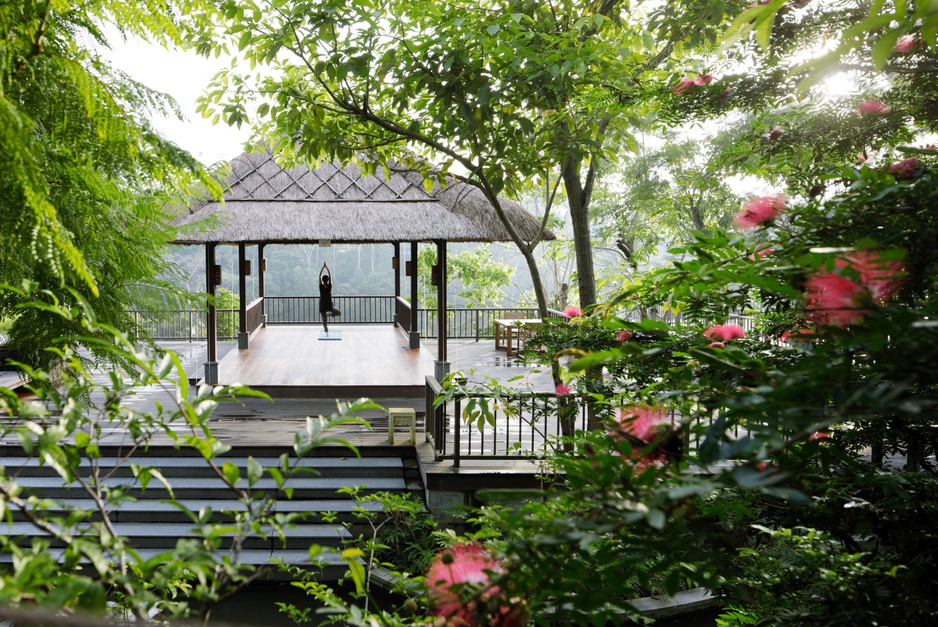
Photo by Hoshino Resorts
The resort offers yoga sessions with views across the valley, though the exact scheduling varies. It's yoga as it should be in Bali – not about achieving perfect poses but about connecting to the landscape around you, the rush of the river below providing a natural rhythm to breathe by.
Stories Told Through Movement
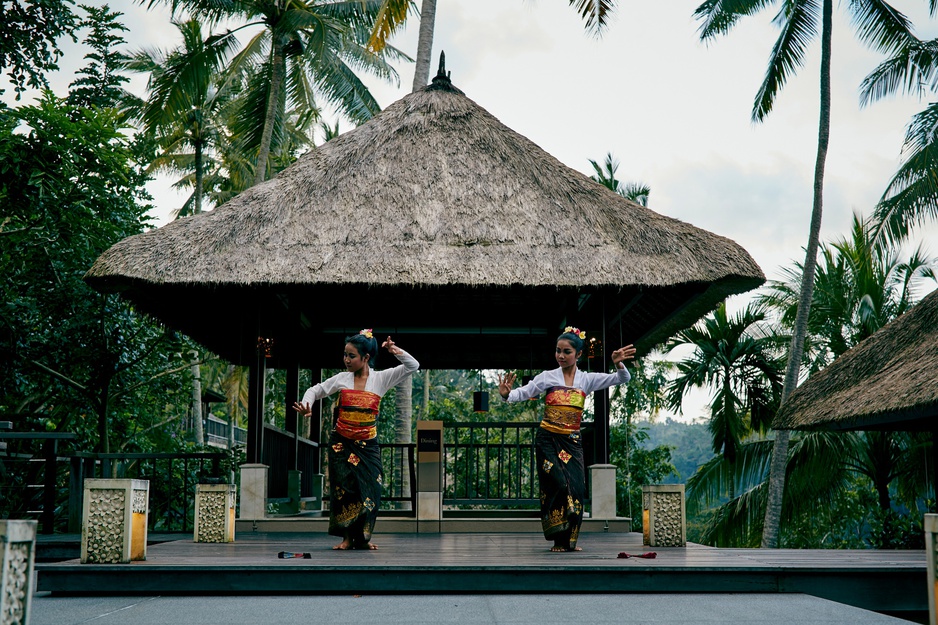
Photo by Hoshino Resorts
Among the traditional craft activities on offer, the Balinese dance experience stands out for its complete commitment. Both men and women can receive the full treatment – elaborate makeup, traditional dress, and instruction in the movements that tell stories through gesture and expression. It's not a casual photo opportunity but a genuine glimpse into an art form that's been refined over centuries, taught by locals who know these dances in their bones.
Br. Pengembungan,Desa Pejeng Kangin, 80552 Ubud, Indonesia


